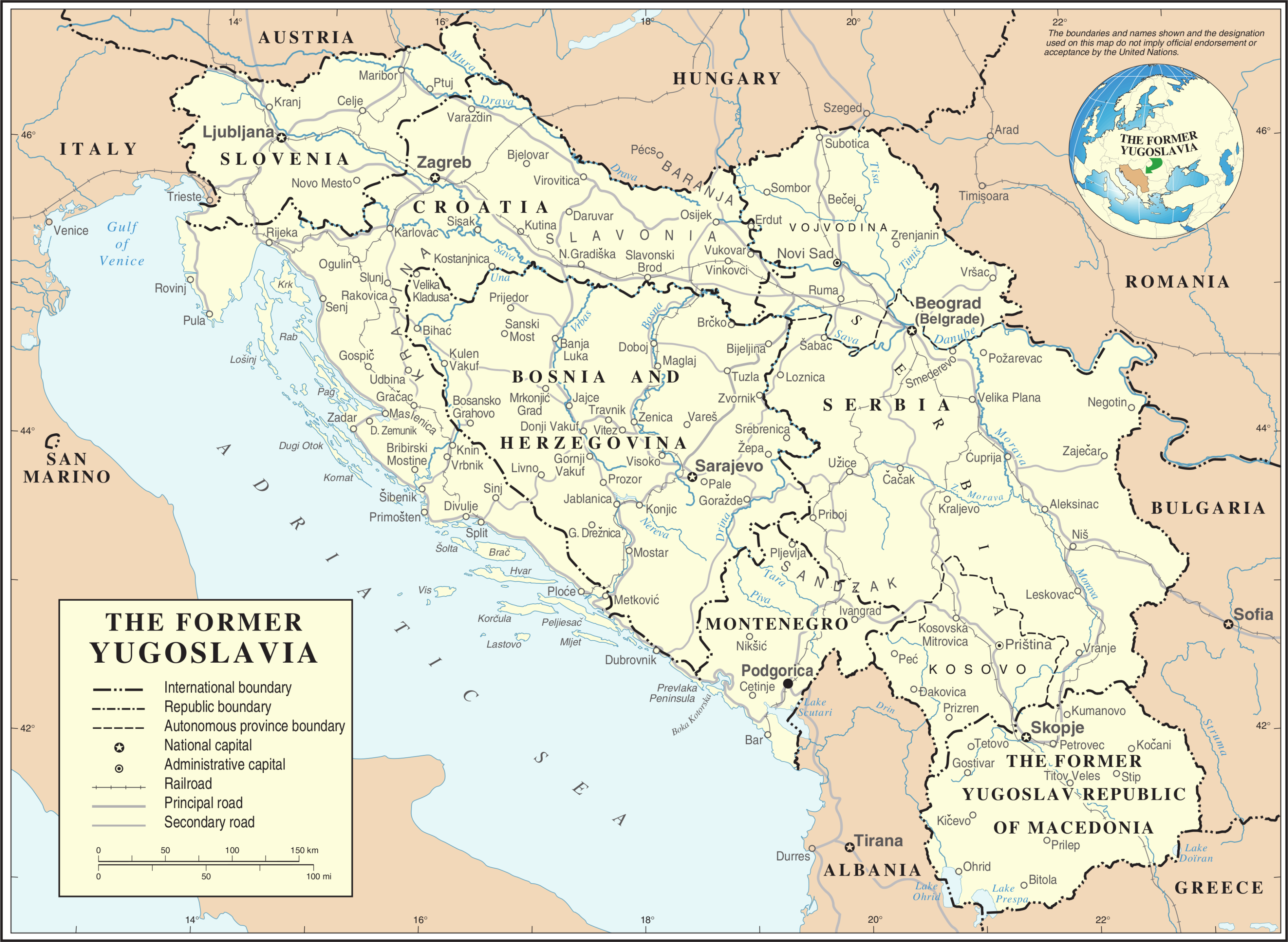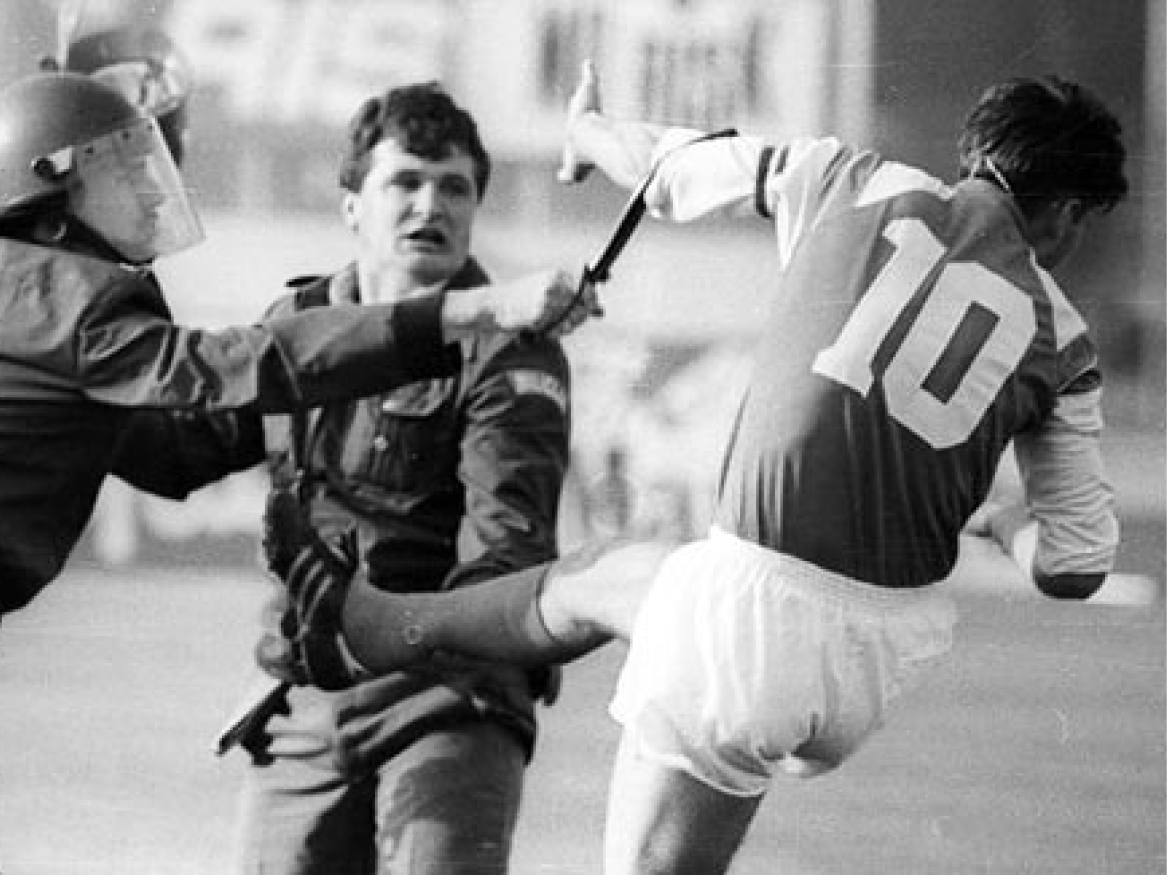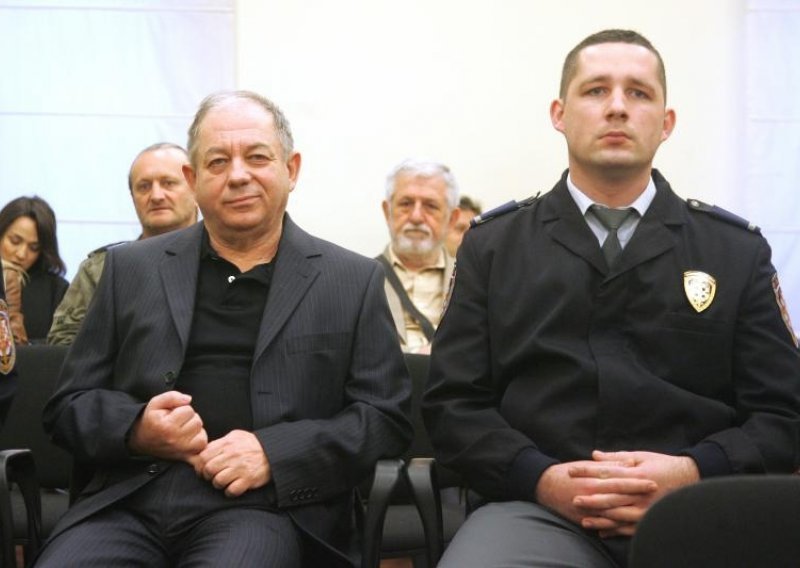Period:
SFR Yugoslavia
Region:
West Slavonia
The Croatian camp Pakračka Poljana in Slavonia 1991
Pakračka Poljana refers to the place where the severe crimes against Serbs and nationally-mixed civilians took place in Western Slavonija in the village of Poljana near the town of Pakrac. The perpetrators were members of the Croatian paramilitary unit “Jesenje Kiše” (officially- the first special unit of Zagreb with more than 200 members) led by Tomislav Merčep.
In the period between 6th October 1991 and 29 March 1992, they killed around 300 civilians- Serbs, without any court warrants or evidence that they committed criminal acts. Victims were mostly from Zagreb, Pakrac, Kutina, Garšenica, etc.
Another commander of this notorious unit of the Croatian Ministry of Interior was Franjo Nemet.
Croatian Persecutor has failed to deal with this case in detail; the trial turned to be a farce, and several verdicts brought after 2005, made a mockery of justice, and families of tortured and killed civilians of Serbian nationality.
BACKGROUND
SFR Yugoslavia was a federal state made up of 6 republics (FR Slovenia, FR Croatia, SR Bosnia, and Herzegovina, SR Montenegro, SR Serbia, and SR Macedonia). Both Yugoslavia and the JNA were established on the principle of “brotherhood and unity” of all peoples and nationalities who lived in the SFRY.
The social and economic system of the SFRY was socialism.
The 1974 Constitution of Yugoslavia brought about the decentralization of the SFRY, which later enabled the separatist forces in Slovenia and Croatia, and later in Bosnia and Herzegovina to begin the dissolution of Yugoslavia, followed by bloody wars and persecution.

In all the constitutions of Yugoslavia, the Yugoslav People's Army was defined as the only legitimate armed force in the territory of the SFRY, and therefore, the only internationally recognized military entity. At the end of 1989, the SFRY Assembly passed amendments to the Constitution, thus replacing the one-party system with the multiparty system, which meant that besides the Alliance of Communists of Yugoslavia, other parties could now be formed.
At the end of January 1990, the Alliance of Communists of Yugoslavia collapsed, at the 14th SKY Congress in Belgrade, when sharp verbal clashes between Slovenian and Serbian delegates occurred regarding the future of the joint state of the SFRY.

Opposing sides - Kučan and Milosević
The Slovenian delegation left the session, immediately followed by the delegation of the FR Croatia, which brought the issue of the congress into question. After them, the delegations of the FR of Bosnia and Herzegovina and the FR of Macedonia also left the congress.
Thus, after 45 years, the rule of the communists in SFRY ended.
The situation in FR Croatia
On the multi-party elections held in FR Croatia on 22 April 1990, the HDZ party won with its political program clearly stating the desire for independence and separation of FR Croatia from SFRY.

Collaborators against the Serbs: Tudjman and Račan
The victory sparked great euphoria throughout the Federal Republic of Croatia and displays of images of Ustasha criminals (Ante Pavelić, Alojzije Stepinac, Vjekoslav Luburić, and others), while Ustasha greetings and Ustasha songs could be frequently heard. This brought back memories of Serbs in SR Croatia of persecution and genocide in the Independent State of Croatia (The Nazi project between 1941-1945).
As early as spring, the HDZ and Franjo Tudjman took control of the police, the media, the prosecution and the state administration. Serbs working in the police were forced to leave in the spring of 1990 immediately after taking over the power, when the conflict at Maksimir (Zagreb's football stadium) between fans of NK Dinamo (Croatia) and FC Red Star (Serbia), were misused for anti-Serb propaganda.
Thus began a media war against everything that had to do with Serbia and Yugoslavia. In summer, the authorities of the FR Croatia in Zagreb made the decision to form the armed forces themselves. In October and November 1990, a large amount of weapons were illegally imported into the Federal Republic of Croatia for the needs of the reserve police forces, members of the HDZ and the VOC. The action was led by Martin Špegelj and Josip Boljkovac, ministers in the then government of Croatia.
Illegal arming of Croats
The JNA Counterintelligence Service made a film about this endeavor at the JNA military training polygon in Gakov in October 1990 and released it on TV Belgrade on 27 January 1991. On 22 December 1990, a "Christmas Constitution" was solemnly proclaimed in the Parliament, by which the Serbs lost their decades-old constitution rights and Croatia removed the name "socialist" in its name.
Since May 1990, the situation in FR Croatia started worsening day by day and the Serbs were terribly scared for their personal security and their property. Ustasha graffiti, slogans, posters could be seen regularly, and a large number of Serbs received threats by phone that they had to move out of their homes and go to SR Serbia. They even received threatening letters bearing the "HDZ" signature.

Violence in Zagreb at the Maksimir stadium
Even Croats who were married to Serbs received such threats.
Serbs in Croatia were fired from their jobs, and even their children were mentally and physically abused in schools. In almost all settlements where Croats had an absolute or relative majority, there were certain members of the HDZ party who had a task to keep an eye on the movement of their Serb neighbors (espionage).
THE SITUATION IN PAKRAC
Pakrac is a town located in the southwest parts of Slavonija (Croatia) at 178 meters of altitude. The town was named after the river which passes through it.
To the South lies the river Sava, while mountains Psunj and Papuk rise to the east. The first mentions of Pakrac are traced back to the 13th century when the Hungarian kings ruled this area. Pakrac and other places of Slavonija were targets of the Turkish invasion in the 16th century, and Pakrac became the center of the sanjak of Slavonija in 1543. After the Turks faced defeat near Vienna, they began to retreat gradually in the next centuries.
Although Serbs lived in these areas before the Turks’ invasion, their highest immigration occurred in the 17th and 18th centuries from the region of Vardar Macedonia, Raška, and Kosovo and Metohija due to their refusal to convert to Islam. This was the primary reason for their migration to the Pannonia region.
This further resulted in the creation of Vojna Krajina (Military Border Province). With the Austro-Hungarian Empire’s dissolution and liberation of this territory, Pakrac and the entire region of Slavonija became part of the first Yugoslavian country- the Kingdom of Serbs, Croats, and Slovenians (The Kingdom of SHS), specifically, the part of the Savska Banate.
In April 1941, the Axis Powers attacked the Kingdom of Yugoslavia and dissolved it. Pakrac and Slavonija were forcibly brought under the Ustasha’s NDH (Independent State of Croatia), whose leaders Pavelić and Stepinac aimed at conducting genocide against Serbs, Jews, and Roma people. 30 kilometers far from Pakrac, Ustasha authorities established the concentration camp Jasenovac where they brought Serbs from the entire territory of NDH, mostly from Western Slavonija.
After World War 2, Pakrac became part of the Federal Republic of Croatia. The whole area witnessed industrialization and progression. Later, at the end of the 1980s, Serbs again became the target of persecution and expulsion, after the regime change in Croatia.
INCEPTION
In mid-September of 1991, Tomislav Merčep left Vukovar and went to Zagreb. Ivan Vekić, then Minister of Interior in the Croatian Government, provided him with logistics and instructions for the formation of a paramilitary unit named “Jesenje Kiše”.
This unit was out of the legal system of the Croatian Ministry of Interior and subjected directly to minister Ivan Vekić and president of Croatia Franjo Tuđman.

Commander of “cleaners”
On behalf of him, they performed criminal acts- murders, blackmails, ethnic cleansing, and persecution, and in turn, they were allowed to plunder property. The unit is known in the public as “Jesenje Kiše” (the Autumn rains) and the history of its crimes began in the town of Gospić on 18 September 1991 when the invasion of JNA barrack “Stanko Opsenica” took place, and where civilians were killed only because they were Serbs, according to the testimonies of the members themselves.
The commander and manager of the camp in Pakračka Poljana (Field of Pakrac) was Tomislav Merčep, and all actions had to wait for his approval. His deputy was Miro Bajramović, born in Zenica.
THE ESTABLISHMENT OF THE CAMP
At the beginning of October 1991, the Merčep’s death squad was sent to the Pakrac surrounding, the village of Poljana, where they established the camp and brought Serbian civilians from the territory of Zagreb, Pakrac, Darvar, Garešnica, Kutina, etc, without a court warrant, and evidence that they committed some sort of criminal activity.
The members of this paramilitary formation killed their victims and burned them. Serbs that were brought to Pakračka Poljana were supposed to “admit something”’- if they had some hidden weapons or communication with the members of Yugoslavian People’s Army, or fighting forces of the Army of the Republic of Serbian Krajina.

Minister of the "war": Ivan Vekic
Victims were not killed immediately but housed in the basement of an elementary school in the vicinity of Pakrac. When there were more prisoners, they were placed in the school’s classrooms.
It was common for the torturers to “deal with” their victims at night when they could do as much harm and suffer to them as possible. They used all disposable means for this aim, inflicting burns on their bodies and then pouring acid on wounds, and even their eyes and genitals. Another way of torturing involved the connection of the prisoner to induced telephone with DC voltage, which imposed great pain and suffering.
They pushed a five-wire power cable into their gluteus leaving it for several hours, after which prisoners couldn’t sit for days because of heavy pain. Furthermore, they put salt or acid on open wounds, enjoying and laughing at their suffering. Merčep’s followers hammered spikes under their nails, and sometimes they would connect them to 3-phase power after which their bodies turned into ashes.
According to the statements of perpetrators, Merčep didn’t participate in liquidations of Serbs, but he was often heard saying: “Clean this shit,” which meant that detainees were to be killed. Members of this notorious unit who had failed to participate in the liquidation of Serbs- civilians were seen as betrayers.
Screams and cries of detainees could be heard across the field where the camp was located. The residents of the village of Poljana were listening to these cries every day and night. They didn’t dare to initiate any protest because they could also end up in the camp.

Croatian president: Franjo Tudjman
Some of the perpetrators of the liquidation testified that detainees sometimes had “death with smiles”. This implied that guards would release them and let them go home, and detainees, believing that they were free indeed would leave the camp with smiles. After they would leave the camp, the guards would shoot them with a sniper, and victims would die with smiles on their faces.
The detainees usually spent 3-5 days in this camp before they were killed. They often had to dig graves themselves for the corpses of other detainees.
The entire unit shared the belief that “Serbs are not humans, and that even their children should be killed.” Women brought to this camp were raped several times.
THE CAMP CLOSURE
The camp Pakračka Poljana, designed for Serbs was closed on 29 March 1992, after six months of its operation. The Ministry of Interior of Croatia ordered its closure because they feared that the delegation of the International Red Cross might come, which, by the way, had never come to this camp before.
NAMES OF KILLERS – EXECUTORS
-
Munib Suljić
-
Miro Bajramović
-
Siniša Rimac
-
Nebojša Hodak
-
Zvonko Stojković
-
Boris Tucman
-
Rajko Bartolin
-
Mijo Jolić
-
Nedeljko Posavec
-
Nikola Rukavina called Pop
-
Igor Mikola
-
Branko Šarić
-
Zoran Karlović
NAMES OF VICTIMS
Here are some of the known names ...
-
Aleksandar Antić aka "Saša"
-
Miloš Ivošević
-
Rade Paić
-
Marko Grujić
TESTIMONIES
On 1st September 1997, the Feral Tribune, a Croatian weekly magazine based in Split, published a testimony of Miro Bajramović, the member of the monstrous unit, entitled “How we were killing in Pakračka Poljana” where he described their evils in detail, confirming that he alone killed 72 Serbs.
He also mentioned that nobody would have found out anything about the camp of Pakračka Poljana if the investigation and trial had not been initiated regarding the liquidation of the Zec family that happened in Zagreb on 7 December 1997.
INDICTMENT AND TRIALS
The first indictment regarding the killings, extortion, and illegal arrests with respect to Pakračka Poljana was raised in December 1997.
The trail to the members of the “Merčep’s band”- Munib Suljić, Siniša Rimac, Igor Mikola, Miro Bajramović and Branko Šarić- began in September 1998, and non-final judgment regarding this case was made in May 1999.

During the proceedings, the defendants didn’t have lawyers, but used their rights to remain silent, which later became a problem, and the Supreme Court of Croatia brought the case back to beginning, except for Miro Bajramović and Branko Šarić who were sentenced to just 4 years of prison as late as 2005.
The total sentence for the Pakračka Poljana case was 30 years of prison for 5 members of the “Jesenje Kiše” unit, and the trial itself lasted for 13 years.
In 2008, the District Court in Požega issued a non-final judgment which sentenced the main accused Damir Kufner to 4,5 years of prison, the second accused Davor Šimić to 1 year of prison, Pavao Vancaš to 3, Tomica Poleto 16, Željko Tutić 12, and Antun Ivezić to 10 years of prison.
Tomislav Merčep had never been declared guilty for any of his crimes, he died in November 2020, without final judgment.
PUBLICATIONS
Although evidence and testimonials abound regarding the crimes of Tomislav Merčep and his notorious unit, a book about Pakračka Poljana has never been written or published.
A documentary about this camp hasn’t been made so far. However, there is the documentary “Pavillion 22” made by Nenad Puhovski in 2002, which deals with the camp in Zagreb from the beginning of 1990s and which was also commanded by Tomislav Merčep. The film has awakened hidden unwanted memories in Croatia and it has been banned, consequently .

The Croatian camp in Zagreb: "Pavillion 22"
Tags:
Please, vote for this article:
Visited: 3241 point
Number of votes: 7
|